Shape and pattern are simple words, but how do they relate to the way we design our gardens and the style we create for ourselves?
Understanding the ways shapes relate to each other is at the very center of garden design, for it is these underlying abstract shapes that give the garden design its strength.
In the design of smaller gardens it is especially important that the shapes used and the patterns that these shapes create suit your situation. Curves, circles, right angles and squares are all shapes that we use in garden design, but how and where we incorporate them makes all the difference in setting the tone of your garden's style.
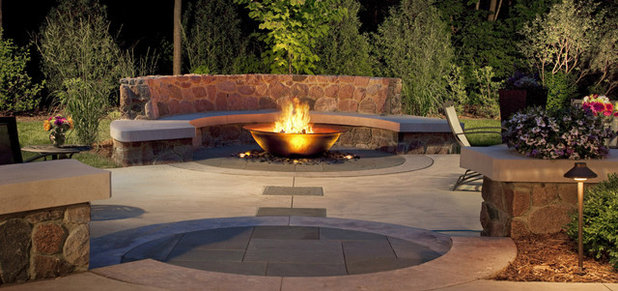
Ginkgo Leaf Studio
The Use of Curves and CirclesThe patterns you want to produce have to tie together all the functions of the garden. When designing a garden, you are not thinking in terms of paving or planting, but how the shapes and patterns they produce will form and create the tone of the scheme you have in mind.
Curves and circles can be difficult to use, especially in small gardens where they can look forced and artificial. Here, the use of arcs and circles entwines together the function of the patio — the round fire pit and the beautiful curved bench seating.
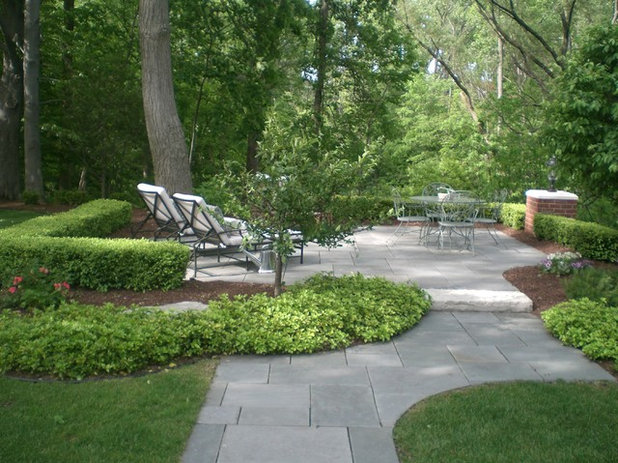
Lark Interior Design
It is important that generous curves within the design have a purpose, perhaps leading the eye to a feature within the garden or even to something outside the boundary, such as a vista.
The design here is enforced by the way the planting has been clipped to conform, but its essential character is based on its underlying pattern. Circles and curves work particularly well when they are arranged as here, within a right-angle grid of paving.
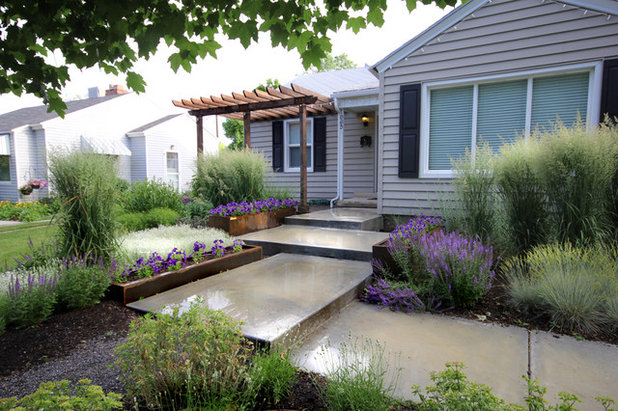
Kingbird Design LLC
Using Simple Geometric ShapesThe type of pattern you use as the basis of your garden plan will depend on its suitability to the site, considering levels, views and the style of the building that the garden will adjoin. The simplest of all shapes in garden design is the square or rectangle, as house walls and boundaries usually suggest a 90-degree pattern.
The use of a single type of shape produces a sense of movement. In this design, it moves our eyes through the garden to the front door.
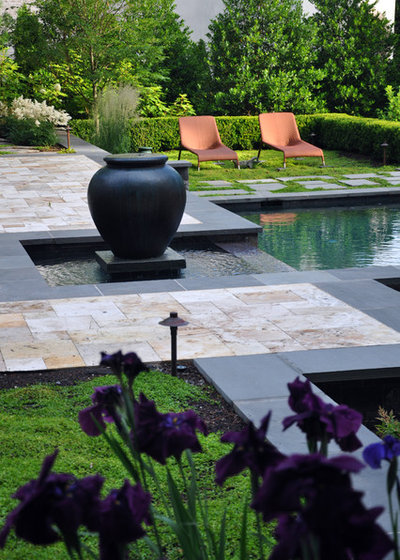
McHale Landscape Design, Inc.
A regular pattern carries all the way through this garden scheme with the use of differing heights, materials and textures, all with basic 90-degree geometric shapes.

C.O.S Design
Differing sizes of regular shapes can unify a design and, in the case of smaller outdoor spaces, confirm its use as an outdoor room.
Giving shapes differing heights will lend definition, but the depth of this sunken also acheives the same effect.
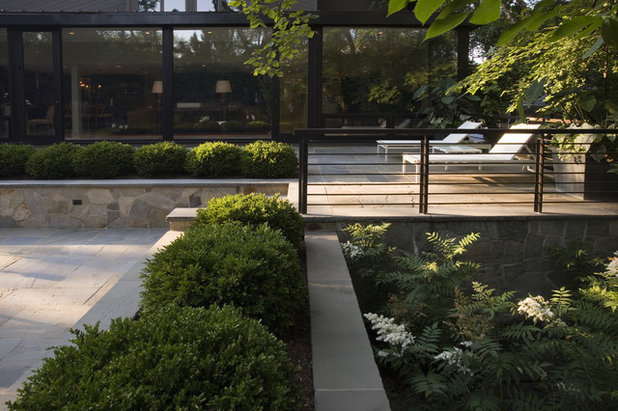
The Garden Consultants, Inc.
Bringing Two-dimensional Patterns to LifeRegularity of pattern carries throughout this garden, with even the chaise longues fitting into the scheme.
Two-dimensional patterns come alive when a third dimension is brought into play. Box plants within this scheme give definition to the rectangular shapes.
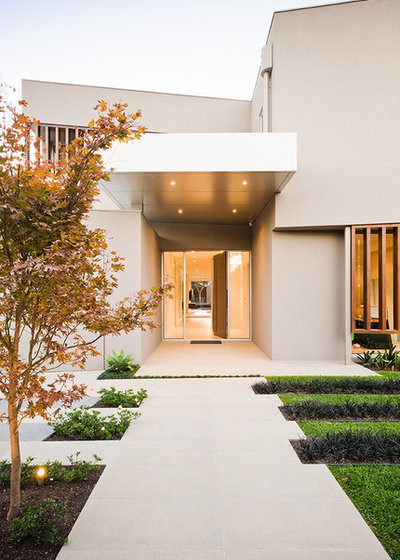
C.O.S Design
This asymmetrical layout uses both linear and rectangular shapes to create an abstract pattern that relates pefectly to the modernist building it fronts.
The simplicity of the planting, including the strong strip planting of
Black mondo grass (
Ophiopogon planiscapus 'Nigrescens'), strengthens the shapes and does not detract from the pattern.

Blakely and Associates Landscape Architects, Inc.
Materials Mold the Tone of Your GardenThe regular paved section of this design could overpower the overall look, but the use of green strips between the blocks visually links both areas and creates a composite pattern.
The materials you select to complete your chosen shapes will mold the tone of your garden. Both hard and soft landscaping materials complement the strong shapes created in this front garden.
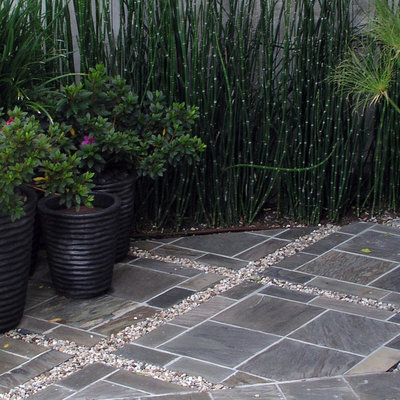
Studio H Landscape Architecture
Dynamic paving patterns can create a sense of movement, but here the use of regular paved squares separated by gravel provides a sense of restfulness.
The curve of the border planting of
Horsetail (
Equisetum hyemale, zones 3-11)
and the cylindrical planters help to emphasize the formality of the square paving.
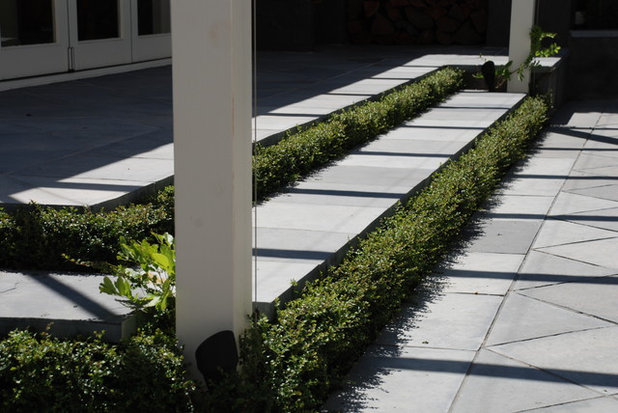
Sometimes nature gives us a hand in creating patterns from manmade shapes. Standard square pavers on this terrace and steps are given extra emphasis by the clipped evergreen runners. The strong, linear shadow lines created by the overhead pergola add to the the whole design.
More:Geometry Roots Great Garden Design
Garden Design Essentials: Shape and Mass
Garden Edging: Clean Lines for Your Landscape





